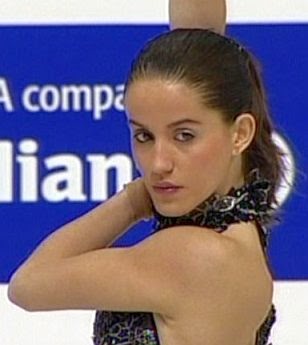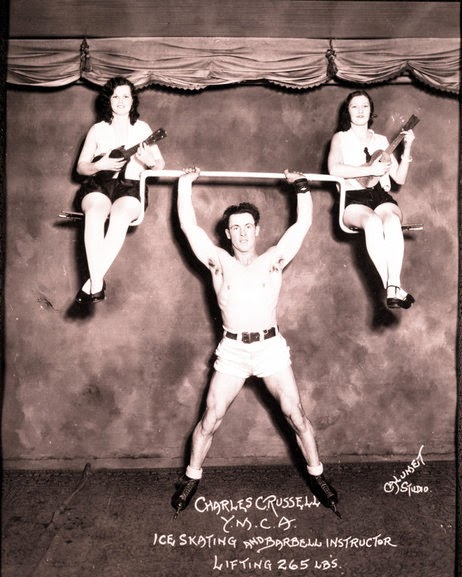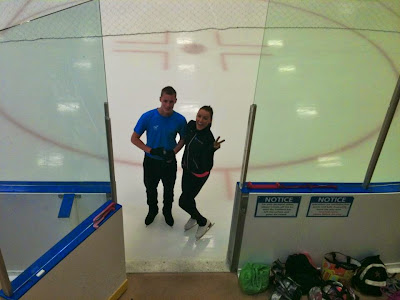With six Mexican titles under his belt, I guess you could say the handsome and obviously talented Luis Hernández has a lot to be proud of. The twenty nine year old started his skating career in the U.S., worked with the brilliant Frank Carroll then made the brave decision to take a step into the unknown and represent his country of birth in competition. Luis took the time to talk to me about his competitive career, his decision to skate for Mexico, working with Frank Carroll and Alexei Mishin and much, much more in this must read interview:
Q: Your skating career has seen you win six Mexican national titles, represent Mexico at the Four Continents and World Championships and at many international competitions including the Finlandia Trophy and Ondrej Nepela Memorial. Reflecting now, what are your proudest moments and most special memories from competition?
A: There have been numerous special and satisfying moments through my career! One that stands out above all is Worlds in 2009 in Los Angeles. After barely being able to walk from being severely injured for years, my body had given in leading up to the championship. Before the short program, I had to look elsewhere for strength and I put myself in the hands of a higher power (whatever you want to call it). It was the Olympic qualifier and I wanted to make sure I could look back and say I tried my BEST without giving up. Reflecting back, I can sincerely say that (regarding the circumstances I was under) I truly performed to the best of my capability. It was a moment I will never forget as I strongly and vividly felt the power of something greater than myself. It was very much a life changing experience. Not to mention, it was very special to have endless amounts of friends and family there supporting and going through the roller coaster with me.
Q: Although you were born in Guadalajara, prior to competing for Mexico you actually competed in the U.S. on both the novice and junior levels before opting to represent Mexico in time for the 2005/2006 season. How did this decision to switch countries come about and was it an easy or difficult decision?
A: It was actually after U.S. Nationals in 2003 that I made the decision to switch. It was by far the hardest decision I had made up to that point in my life. I was approached by the President of the Mexican Skating Federation during a North American Challenge Skate (where I was representing the USA internationally). My sister had been skating in Mexico (practices I was dragged to as a baby) for many years before I began competing in the USA. Mr. Jose Luis Aguilar was a familiar face and at that event formally offered me to skate for my native country and "help to raise the level of figure skating in Mexico". It was also obvious that I would have many more opportunities to see the world and compete in the big events as I had always dreamed. I was very hesitant as my career was going well in the USA but agreed to give it deep thought. After about a year of thinking, I began to become impatient and had an enormous drive and curiosity to see the world. Being young and stubborn, I made a decision that was entirely mine and had no idea that I was in for quite a RIDE! After making the switch, I had not represented the USA internationally for a year (since 2002), yet was made to sit out completely from competition for two and a half years for reasons unknown to me to this day. Those two and a half years were some of the darkest times for me professionally and personally. I left the sport entirely before realizing that it was my innermost truth to skate. Skating was where my soul was happiest and therefore I would keep fighting.
Q: You have worked with some fantastic coaches including Frank Carroll, Alexei Mishin and Ken Congemi. What have each of the coaches you've worked with over the years taught you that's made you the skater you are today?
A: I have been blessed with the opportunity to work with amazing and legendary coaches. From each one, I learned something different, not only about skating but also about life. Ken Congemi was and is the most enthusiastic and positive minded coach I ever worked with. He ALWAYS means business when it comes to training. Being very artistically inclined, his more "common sense" approach to skating was amazing at keeping me grounded. I worked several summers with Alexei Mishin (in the United States and Europe). He taught me that genius comes in many different forms and that the rules of skating are not so BLACK and WHITE. His technique sometimes consisted of blurting out rhythmic words while performing one of his several dozen jumping exercises. He made skating more fun than it already was and put his heart into any skater he chose to work with. Undoubtedly my biggest influence came from Frank Carroll (whom I worked with from the age of fourteen until the age of twenty). He is and always will be a teacher that led by example. Leading his life with the highest standards of integrity and devotion to his craft, he motivated me to strive for excellence in all aspects of my own life. As a more mature individual, I often look back and understand so much better what he so fervently tried to instill in me everyday for so many years: discipline, organization and attention to detail. His guidance and example are not only expressed by his teachings but are intrinsic to who he is.
Q: Federacion Mexicana de Patinaje Sobre Hielo y Deportes de Invierno is a relatively new player in the international figure skating community having formed in 1987. How is skating growing in popularity 'south of the border' and do you feel it is a sport that will continue to gain momentum in the coming years?
A: Figure Skating in Mexico is experiencing an incredible boom. To give an example, there are thirteen to fifteen rinks now in Mexico City alone and countless rinks throughout the country. From seminars I have personally taught and seeing the younger competitors, I can tell you that there is endless amount of talent. Time will tell if the lack of funding (to high level and emerging skaters) will affect the future and growth of the sport. In my opinion, this issue is one that needs some serious attention and review.
Q: Back in 2003, I spent a week in Cabo San Lucas and did NOT want to leave! In your opinion, what is the one place that people HAVE to visit in Mexico?
A: By far and above, Mexico City! It is my favorite city in the world and one full of magic, energy and culture. You have amazing architecture ranging from ancient pyramids and colonial cathedrals to the most sophisticated and modern buildings. Art in all forms is on display at the many museums, theaters and the opera house. Last but not least, the FOOD, the nightlife and the welcoming hearts of the people are what make the city what it is! I never fail to get excited just thinking of it!
A: My goals for skating are very different than they were as a young skater. I have no longer skated to prove anything to anyone. I learned the hard way to respect my body (battling hip deterioration since 2005) and to listen to its cues. Skating brings me great joy and acts as my compass in life. After my last national title in 2013, I decided to be where I am today, exploring what I want to do with skating next! I will always be a skater in my heart and because of that, I know I will never stray too far.
Q: Who are your three favourite skaters of all time and why?
A: My three favorite skaters of all time are Kurt Browning, Alexei Yagudin and Michelle Kwan. They are to me, real-life super heroes. They are people who touched my core and stood as pillars like beautiful architecture exemplifying excellence. They are warriors of life who had the guts to be authentic and to display not only their amazing moments of magic but also their biggest downfalls. They rose from the ashes time and time again and continue to motivate me simply by being who they are.
Q: What's one thing most people don't know about you?
A: (laughing) What a question! There are too many things and I can't pick just one! Although I have my very extroverted moments, I am in actuality, EXTREMELY introverted and mostly prefer to go quietly about my life. Oh! There we go! I guess that's one thing most people don't know about me!
Q: What do you love most about figure skating?
A: The freedom it gives me to fly and to simply be me.
Skate Guard is a blog dedicated to preserving the rich, colourful and fascinating history of figure skating. Over ten years, the blog has featured over a thousand free articles covering all aspects of the sport's history, as well as four compelling in-depth features. To read the latest articles, follow the blog on Facebook, Twitter, Pinterest and YouTube. If you enjoy Skate Guard, please show your support for this archive by ordering a copy of figure skating reference books "The Almanac of Canadian Figure Skating", "Technical Merit: A History of Figure Skating Jumps" and "A Bibliography of Figure Skating": https://skateguard1.blogspot.com/p/buy-book.html.

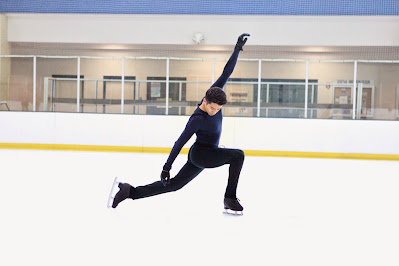

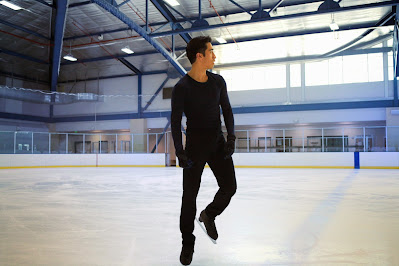
.jpg)





